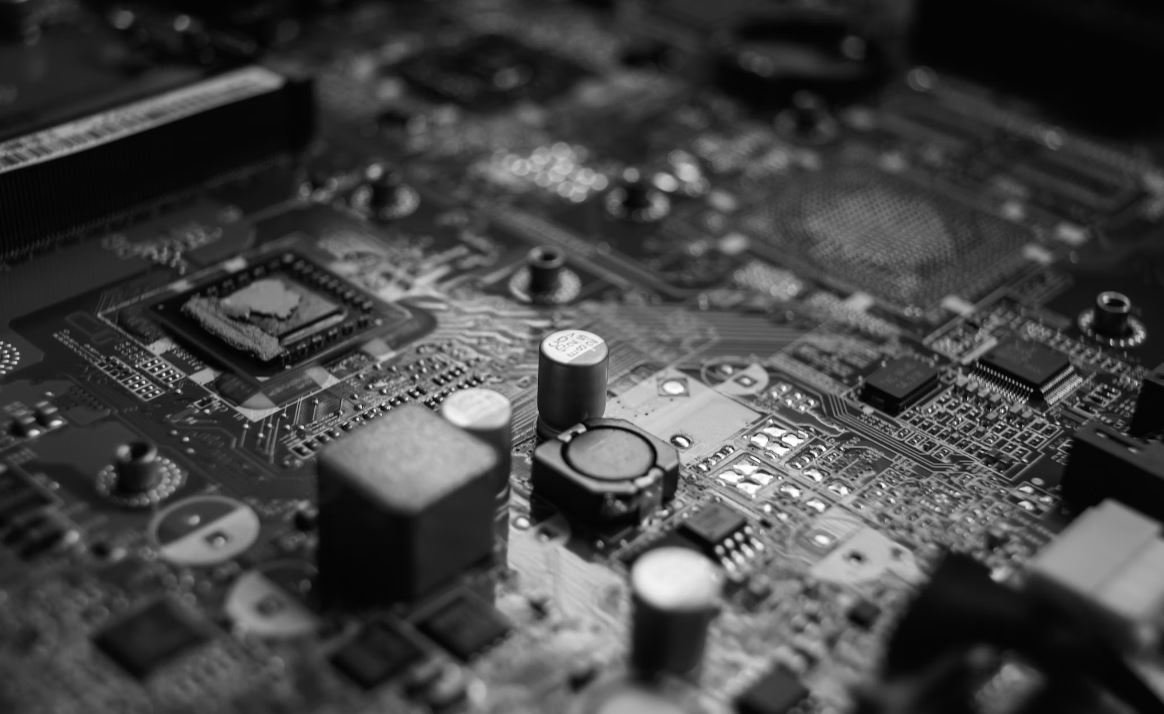When Artificial Intelligence Started
Introduction
Artificial Intelligence (AI) has become an integral part of our daily lives, but have you ever wondered when it all started? The development of AI can be traced back to several key milestones in history that paved the way for the advancements we see today.
Key Takeaways
- AI development can be traced back to several significant milestones.
- AI has evolved over time to solve complex problems and improve efficiency.
- Machine learning and deep learning are fundamental concepts within AI.
- There is ongoing research and development to push the boundaries of AI technology.
The Origins of Artificial Intelligence
The birth of AI can be attributed to a Dartmouth College conference held in 1956, where the term “artificial intelligence” was coined. This event brought together renowned researchers who aimed to develop machines capable of simulating human intelligence. *This marked the beginning of an exciting journey towards AI innovation.*
Early Breakthroughs and Foundational Concepts
During the 1950s and 1960s, researchers made significant strides in AI development. They created programs that could solve complex mathematical problems and play games like checkers. These early successes laid the groundwork for future advancements in machine learning and natural language processing.
Advancements in Machine Learning
Machine learning, a subset of AI that focuses on algorithms and statistical models, began gaining momentum in the 1980s. The availability of large datasets and improvements in computational power enabled researchers to develop more sophisticated learning algorithms. *This enabled machines to learn and improve from experiences, similar to how humans learn from their mistakes.*
Deep Learning Revolution
In recent years, deep learning has revolutionized the field of AI. Deep learning models are built using neural networks with multiple layers, allowing them to analyze and understand complex patterns in data. This breakthrough has paved the way for advancements in image recognition, natural language processing, and autonomous vehicles.
The Future of AI
The future of AI holds immense potential for innovation. Ongoing research aims to create AI systems that possess human-like reasoning capabilities and can adapt to changing environments. As AI technology continues to evolve, we can expect to witness more breakthroughs that shape various industries and improve our daily lives.
Table 1: Key Milestones in AI Development
| Year | Milestone |
|---|---|
| 1956 | Dartmouth Conference – Coined the term “artificial intelligence”. |
| 1960 | Creation of the first chatbot, ELIZA. |
| 1986 | Development of the backpropagation algorithm for training neural networks. |
Table 2: Advancements in Machine Learning
| Decade | Advancement |
|---|---|
| 1950s-1960s | Development of programs capable of solving complex mathematical problems. |
| 1980s | Rise of machine learning with improved algorithms and computational power. |
| 2000s | Acceleration in machine learning fueled by large datasets and advancements in parallel computing. |
Table 3: Deep learning Applications
| Application | Description |
|---|---|
| Image Recognition | Deep learning models have achieved remarkable accuracy in identifying objects and faces in images. |
| Natural Language Processing | Deep learning algorithms enable machines to understand and generate human language with high accuracy. |
| Autonomous Vehicles | Deep learning is vital for self-driving cars to perceive their surroundings and make real-time decisions. |
The Exciting Journey Continues
As AI technology advances, our understanding of artificial intelligence continues to grow. With ongoing research and development, the possibilities for AI applications are limitless. From the early foundations laid in the 1950s to the deep learning revolution of today, AI has come a long way and will undoubtedly shape the future in incredible ways.

Common Misconceptions
Misconception 1: Artificial Intelligence started in recent years
One common misconception about Artificial Intelligence is that it is a recent development. However, the truth is that the concept of AI has been around for decades. While advancements and breakthroughs have occurred in recent years, AI research and development started long ago.
- AI research dates back to the 1950s
- The term “Artificial Intelligence” was coined in 1956
- Early AI systems focused on rule-based reasoning
Misconception 2: Artificial Intelligence is only about robots
Another misconception prevalent among people is that AI is solely about robots and human-like machines. Although robotics is an application of AI, Artificial Intelligence encompasses a much broader domain. AI involves developing algorithms and systems that can perform tasks that typically require human intelligence.
- AI can be applied in various fields, such as healthcare, finance, and transportation
- Natural Language Processing (NLP) is an AI subfield used in speech recognition and chatbots
- Machine Learning, a branch of AI, focuses on developing algorithms that learn and make predictions
Misconception 3: Artificial Intelligence will replace human workers completely
One prevalent misconception is the fear that AI will completely replace human workers, leaving many unemployed. While AI systems can automate certain tasks, the idea that AI will eradicate the need for humans in the workforce is false. AI is designed to augment human capabilities, making tasks more efficient and allowing humans to focus on higher-level responsibilities.
- AI can improve productivity and enhance decision-making processes
- Jobs will evolve with AI, creating new roles and opportunities
- Human input and oversight are crucial in ensuring ethical and responsible AI development and deployment
Misconception 4: Artificial Intelligence possesses human-like consciousness
There is a misconception that AI possesses human-like consciousness and is capable of experiencing emotions and intentions. However, the truth is that current AI systems lack consciousness and subjective experiences. While AI can simulate human behavior and recognize patterns, it lacks the ability to feel or have intentions like humans.
- AI operates based on algorithms and data rather than human consciousness
- AI systems rely on patterns and statistical analysis
- Consciousness is a complex and philosophical concept, not replicated in AI
Misconception 5: Artificial Intelligence is infallible and immune to errors
Lastly, a common misconception is that AI systems are infallible and free from errors. However, just like any technology, AI is not immune to mistakes and biases. AI systems heavily depend on the data they are trained on, and if the data is biased or flawed, it can affect the accuracy and fairness of AI algorithms.
- Garbage in, garbage out: AI is only as good as the quality of its training data
- AI can exhibit biases and perpetuate unfairness if not properly monitored and audited
- Continuous improvements and retraining are necessary to enhance AI performance and reduce errors

Major Milestones in Artificial Intelligence Development
Artificial Intelligence (AI) has rapidly evolved over the years, transforming various industries and revolutionizing the way we live. Here are some significant milestones in the development of AI technology:
Application of AI in Healthcare
The healthcare sector has benefited greatly from AI applications. Here are some instances of AI integration in healthcare:
AI in Autonomous Vehicles
Artificial Intelligence is driving the advent of autonomous vehicles, enhancing safety and efficiency. Consider the following examples:
AI in Finance
The finance industry utilizes AI to streamline operations and improve decision-making processes. Here are some ways AI is applied in finance:
AI in Music Composition
AI has extended its impact on creative fields, including music composition. The following examples highlight AI-generated music:
AI in Customer Service
Artificial Intelligence has transformed customer service by providing efficient and personalized experiences. Take a look at these AI-driven customer service applications:
AI in Virtual Assistants
Virtual assistants have become an integral part of our daily lives, thanks to AI technology. Explore the capabilities of AI-powered virtual assistants:
Ethics in AI
As AI continues to evolve, ethical considerations are paramount. Here are some ethical issues associated with AI development:
Rise of AI in Education
AI is reshaping the education landscape, offering personalized learning experiences. Discover how AI is applied in education:
AI in Marketing
AI-based marketing strategies have proven effective in target audience engagement and driving business growth. Observe the use of AI in marketing:
In conclusion, the development of Artificial Intelligence has reached remarkable milestones across various industries. From healthcare and finance to music composition and marketing, AI is making significant contributions. However, ethical considerations must be prioritized to ensure responsible and beneficial AI integration in society.
Frequently Asked Questions
When Artificial Intelligence Started
What is artificial intelligence?
Artificial intelligence refers to the simulation of human intelligence in machines that are programmed to think and learn like humans. It includes various subfields such as machine learning, natural language processing, computer vision, and more.
When did artificial intelligence start?
The concept of artificial intelligence was introduced in the 1950s. The field has progressed rapidly since then, with significant advancements and breakthroughs in the past few decades.
Who coined the term ‘artificial intelligence’?
The term ‘artificial intelligence’ was coined by John McCarthy, an American computer scientist, in 1956. He is considered one of the founders of the field.
What were the early applications of artificial intelligence?
In the early days, artificial intelligence was primarily focused on tasks such as playing chess, solving complex mathematical problems, and language translation. These applications laid the foundation for further advancements in AI.
How has artificial intelligence evolved over time?
Artificial intelligence has witnessed significant evolution over time. Initially, AI systems relied on rule-based programming and expert systems. However, with the advent of machine learning and neural networks, AI has become more capable of learning from data and making accurate predictions.
What are some modern applications of artificial intelligence?
Artificial intelligence is now being used in various domains, including healthcare, finance, transportation, and entertainment. It powers virtual assistants, autonomous vehicles, fraud detection systems, and personalized recommendation engines, among many other applications.
What are the ethical considerations surrounding artificial intelligence?
As AI continues to advance, ethical dilemmas arise. Concerns include job displacement due to automation, biases in AI algorithms, privacy concerns, and the potential misuse of AI technology. Ensuring responsible development and deployment of AI is crucial.
Will artificial intelligence replace human jobs?
While AI has the potential to automate certain tasks, it is unlikely to completely replace human jobs. Instead, AI is expected to augment human capabilities and improve efficiency in various industries.
What are the future prospects of artificial intelligence?
The future of artificial intelligence holds tremendous potential. AI is expected to continue transforming industries and society as a whole. Advancements in AI research, such as explainable AI and advanced robotics, will drive further progress in the field.
How can I learn more about artificial intelligence?
There are numerous resources available to learn about artificial intelligence. These include online courses, books, research papers, and participating in AI communities and forums. It is recommended to start with basic concepts and gradually delve into more advanced topics.




